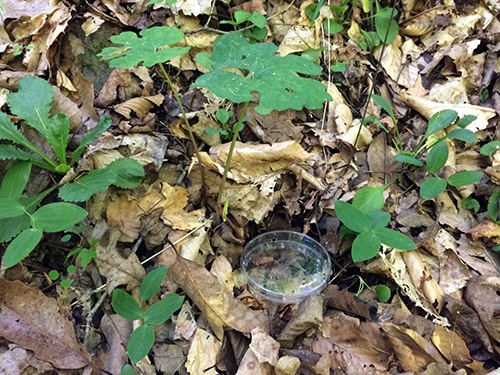Postcard from a Fellow: Melissa Burt investigates seed dispersal by ants
July 30, 2020


My original plan for this summer was to spend several weeks at the Savannah River Site in New Ellenton, SC investigating the effects of habitat connectivity on ant community dynamics. This year would have been the sixth (!) consecutive year of annual pitfall trapping for a project in which my collaborators and I are using a landscape experiment to investigate how habitat connectivity via corridors affects ant community dynamics. I also had plans to get started on a new study aimed at investigating the effects of connectivity on ant-plant seed dispersal networks in the same experiment. It was going to be a summer spent watching ants in a hotspot of biodiversity among the Longleaf pines. However, those plans all began to change as travel began to be restricted in March because of the COVID19 pandemic. My plan of spending a couple of weeks each month traveling back and forth from VA to SC was no longer a safe plan.
Instead, I have switched gears a bit. I have still been observing ants and their interactions with seeds, but I am instead doing that in local field sites in southwest VA as part of a collaboration with Annika Nelson (postdoc in the Whitehead Lab in the Dept. of Biological Sciences). We are generally interested in how global change may impact important species interactions, such as seed dispersal.
So, we have been visiting sites that occur over a gradient in elevation to measure rates of Bloodroot seed dispersal. Bloodroot seeds are known to be dispersed by ants – the seeds have a fleshy appendage called an elaiosome that the ants eat, but they leave the seed itself intact. Ants that disperse these seeds take the seed+elaiosome back to their nest, where they eat the elaiosome. The seed then gets moved to their trash piles either within or outside their nests. Many early-spring ephemeral plants in southern Appalachian forests disperse their seeds this way! In addition to measuring rates of seed dispersal, we have also been collecting seeds so that hopefully this fall we can measure their chemical composition.

My summer field season has changed in other ways as well. As a result of canceled childcare, I have been spending much more time multitasking my work responsibilities with my parenting responsibilities. Fortunately, I do have some flexibility in structuring my schedule so that I can do both. In some cases that has meant having my two boys with me in the field scouting for ants-dispersed plants. My 8 year-old is now an expert in identifying many ant dispersed plants, while my 3 year-old has found that he is more interested in finding salamanders under stones and logs). In other cases, this has meant working at night or early in the morning so that I can put all of my attention into work or muting my video and sound on zoom if my kids are being particularly loud during a virtual meeting. It’s certainly different than conducting research in “normal” times, but I’m doing my best to juggle it all during this pandemic.






